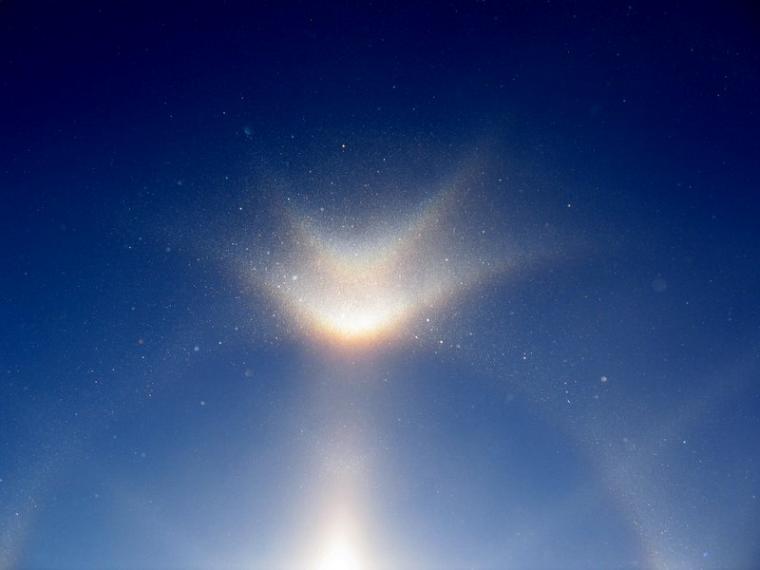
This subsun-like pillar on front of dark cloud was photographed by
Jenni Elina Holopainen on 18. May 2006 in Pyytivaara, Finland. The position of the pillar is apparently the same as that of the Sun's behind the cloud, which is better revealed by the cloud rays in
another photo.
So how this is possible? The explanation must be a reflection of sun light from still water body and further reflection of this light from ice crystals that are precipitating from the Altocumulus clouds seen in the picture. Thus we are looking here - not at the subsun - but at "supersun".
The best sun pillars are usually seen in the icy virga of the Altocumulus clouds. This is because virga can consist of very big plate crystals that have plenty of horizontal surface to reflect sun light. Thus it would be expected that if this phenomenon were to occur, it would be Ac virga if anything. In high clouds it's impossible to see this, becase there is nothing behind the crystals to block the Sun. And when diamond dust occurs, waters are usually frozen. Thus ice crystals precipitating from middle level clouds is perhaps the only possible formation for the phenomenon Holopainen photographed. In yet
another photo taken by Holopainen, a curved Ac virga can be seen in the middle of the picture above the lake. This is the lake that most likely was responsible for the reflection.
Actually this is not the first observation we have of this kind of phenomenon. In the end of 90's in Oulu a pillar of light (with no distinct subsun like appearance) was observed in a similar manner.
 For all rare halos of the world is database now. The most contribution to database is from Finnish, Czech and German observing networks, and from acouple of active observers from USA. You can search the database in four ways: all observations, name of observer, country of observation and name of halo.
For all rare halos of the world is database now. The most contribution to database is from Finnish, Czech and German observing networks, and from acouple of active observers from USA. You can search the database in four ways: all observations, name of observer, country of observation and name of halo.








